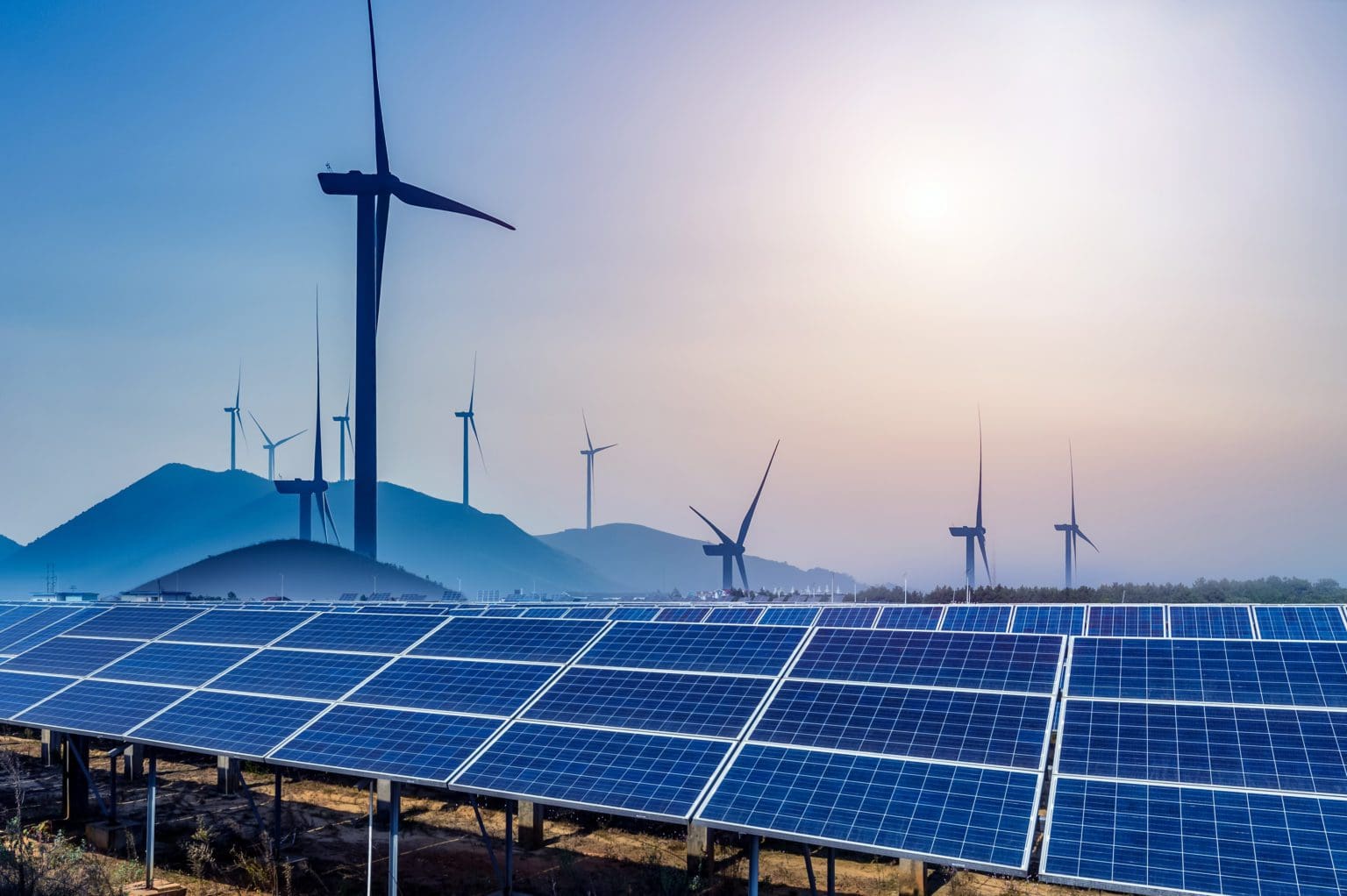Fossil energy prices have started to climb in Hungary, just like in most European countries. As a result, there is a need to explore the possibilities of replacing fossil fuels that are becoming more expensive and less available by the day. Renewables might seem a feasible option, but are these sources truly sustainable?
Europe– with Hungary in the heart of it– is experiencing difficulties in ensuring a smooth flow of energy supplies because of the war in Ukraine. Most countries have set out to economise their energy consumption and have started to look for new alternative energy sources, and for new supply routes that would allow them to ease their energy dependence on Russia. One element of this struggle is the shift towards renewable resources such as wind power, hydropower, or solar power and the green hydrogen that might be derived from them. But the availability of such resources highly depends on geography and the climate, consequently they might seem a lot more unreliable than fossil fuels that can be mined and transported at a pre-set pace. As opposed to that, the weather cannot be controlled, only thoroughly studied for reliable predictions and used to our benefit. The question whether Hungary can become a green, zero emission economy is often asked, and the current global energy crisis may be a further incentive to realise this goal. What potential does Hungary possess when it comes to renewable energy generation? What macro and micro changes have to be made in the energy sector to substitute fossil fuels with their green alternatives?
We have started on the path towards the creation of a net zero emission economy
Hungary has been increasing its share of renewable energy sources in its energy mix since even before its accession to the European Union. While in 2004 renewables gave only 4.4 per cent of national energy consumption, this percentage increased to 16.2 per cent by 2013, only to drop to 12.6 per cent in 2019. What is more, since the year 2000 green electricity consumption has jumped from 0.6 to 10 per cent.[1] So it is fair to say that we have started on the path towards the creation of a net zero emission economy, but before we become either too optimistic or pessimistic, we might want to examine what potential our territory and our climate grant us, and what we can do to harvest it the best we can.
Wind Power
Hungary operates a relatively high number of wind turbines, about 180. These are able to produce approximately 330 MW of energy.[2] The country is moderately fortunate when it comes to wind, yet we have failed to install the most modern available technologies. Most of the currently operating turbines were installed at the beginning of the 2000s and they reflect the technology of those years. Hungary could do a lot better by installing taller towers exceeding 120 metres of height instead of the currently operated ones mounting only to 70-80 metres. The lower towers can be installed only in the north-western part of Hungary, while by using higher towers winds blowing on almost the entirety of our territory could be harnassed.[3] Wind power remains a highly debated question, but the fact of the matter is that we have the resources to boost wind energy production if we ever decided to exploit them.
Solar Energy
Some say Hungary is in a perfect position when it comes to solar power extraction. Sunshine hours are long, between 2200 and 2300 a year, while in some locations it might exceed 2500 hours a year. This means that if we install solar panels on our national territory, it is likely that they will be exposed to sunlight 90-110 days a year.[4] And this figure is expected to grow, which is one of the rare, more beneficial side-effects of climate change. Beside the amount of average radiation that reaches the Earth from the Sun, cloud coverage is also an important indicator. Here too Hungary is at an advantage, as our climate does not involve exceedingly long periods of cloudy, rainy episodes.
Energy prices in the business sector did not start to grow during the last couple of months, entrepreneurs have in fact been experiencing difficulties at least since last autumn. As a result, since the second half of last year, demand for solar power has been continuously growing. While for a long time only enterprises felt the need to use solar energy given the fact that they could not benefit from low-cost energy provided for household consumers, now with the changes in the Hungarian utility sector, families have also started seeking this solution in order to avoid the ramping energy prices. In the first half of 2022 3400 MWh solar energy capacity was registered in the country, 50 per cent of which is related to households and SMEs.[5] As we can see, solar power extraction is an unusual segment of the energy sector, as it is more consumer-oriented, change here can be induced in a bottom-up structure, altering the consumption habits of individual consumers.
Hydropower Energy
When it comes to Hungary, one would assume that an abundance of hydropower is a given, considering the many rivers that flow in the Carpathian Basin. That, however, is not the case, as most of our rivers are unfit for power generation because of their low gradient. In total, there are 15 hydropower plants operating on the national territory, not necessarily on the biggest rivers of Hungary. Overall Hungarian hydropower potential is 1000 MW, 72 per cent of which could be extracted from the Danube alone. Unfortunately, currently there is no operating hydropower plant on the Danube, but there are two minor facilities on the Tisza, of a productivity of 11.5 MW and 28 MW respectively. We can find additional minor plants on the river Rába that together produce 10 million kWh of energy a year.[6]
One would assume that an abundance of hydropower is a given
Hydropower has a distinct advantage when we compare it with other renewable sources. The productivity of hydropower plants is predictable, except in the case of extreme weather conditions such as a drought or a flood. Of course, the eventuality of such extremities has been increasing for a couple of years, but still, hydroelectricity production is less volatile than wind or solar power-based generation. The best-case scenario in this regard is when both floods and droughts are rare, like in 2014, when Hungary was able to produce 301 GWh of electricity in all of its hydropower plants combined.[7] Because of this relative predictability there is constant investment into hydropower generation. Nevertheless, hydropower is not very significant in Hungary, and neither is its potential, if compared with other renewable sources. In 2019, only 4.7 per cent of green electricity was produced by hydroelectrical plants.
Conclusion
Based on the above considerations, relying solely on renewable sources is not a sustainable option in Hungary for the time being. While overall Hungary does have a great potential in terms of solar, wind and hydropower, it will take a long time before the country can base its economy on renewables.
[1] KSH (Hungarian Central Statistical Office) https://www.ksh.hu/sdg/3-37-sdg-7.html (16.08.2022.)
[2] Magyar Szélenergia Ipari Társaság https://www.mszit.hu/szeleromuvek-magyarorszagon/ (16.08.2022.)
[3] dr. Papp László: Erre számíthatunk, ha újra lehet majd szélerőműveket építeni Magyarországon. In: Villanyautósok. 16 January 2022. https://villanyautosok.hu/2022/01/16/erre-szamithatunk-ha-ujra-lehet-majd-szeleromuveket-epiteni-magyarorszagon/(17.08.2022.)
[4] Napelem Tanácsok https://napelemtanacsok.hu/magyarorszag-napenergia-felhasznalasa/ (16.08.2022.)
[5] Szabó Gyula: A rezsicsökkentés módosítása teljesen felforgatta a napenergia-piacot. In: Index. 16.08.2022. https://index.hu/gazdasag/2022/08/16/rezsicsokkentes-hatasa-rezsicsokkentes-aram-rezsicsokkentes-valtozas-napenergia-naperomu-energia-veszhelyzet/ (17.08.2022.)
[6] Göőz Lajos – Kovács Tamás: Vízenergia. In: Kiss Ferenc – Monoki Ákos: Megújuló energia. http://www.nyf.hu/others/html/kornyezettud/megujulo/vizenergia/Vizenergia.html (16.08.2022.)
[7] Dajkó Ferenc Dániel: Sokkal több vízerőmű dolgozik itthon, mint gondolná – Térképen mutatjuk, hol mennyi áramot termelnek. In: Növekedés.hu/elemzések. 4 May 2021. https://novekedes.hu/elemzesek/sokkal-tobb-vizeromu-dolgozik-itthon-mint-gondolna-terkepen-mutatjuk-hol-mennyi-aramot-termelnek (16.08.2022.)








